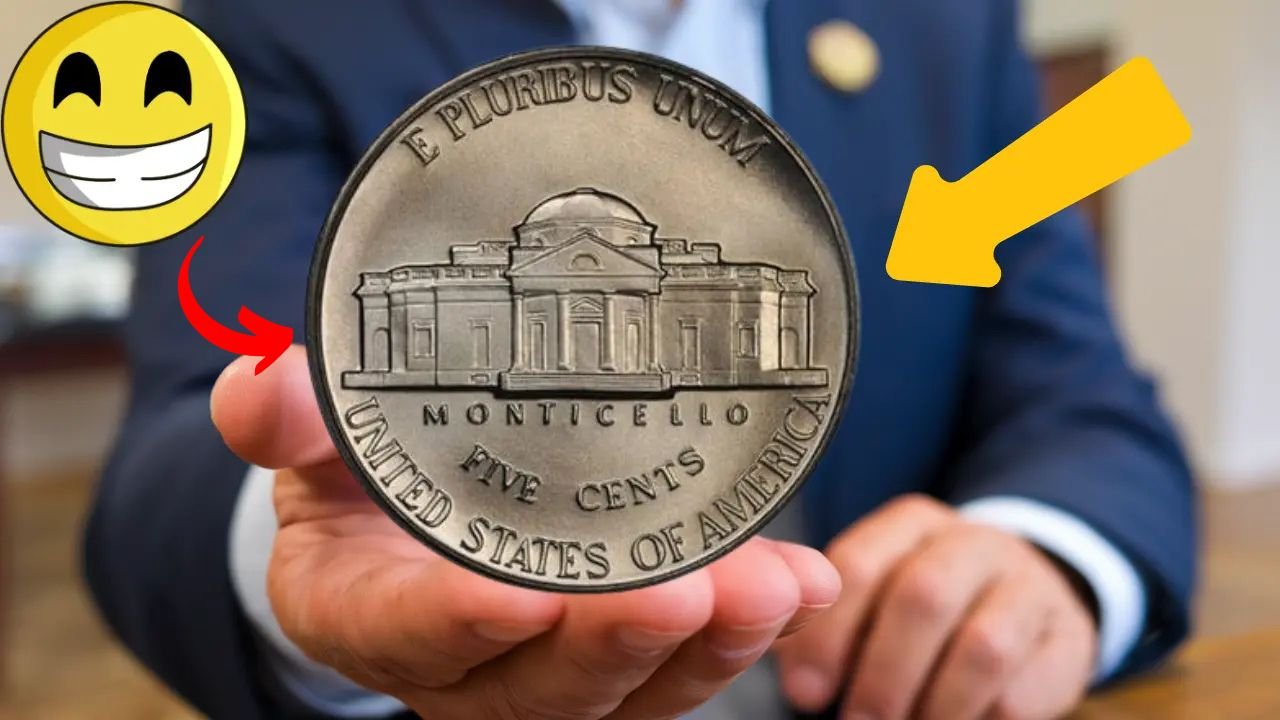During World War II, when metal resources were scarce and every ounce of copper and nickel was needed for the war effort, the U.S. Mint made a historic change that would later create one of the most sought-after coins in American history — the War-Era Jefferson Nickel. Once a humble five-cent coin used in everyday purchases, this special wartime issue has become a numismatic treasure, with rare examples fetching tens of thousands of dollars at auction.
The Origin of the War Nickels
From 1942 to 1945, the U.S. Mint faced a major dilemma: nickel, a key component in coinage, was also essential for producing weapons and armor plating. To save this critical material for the war, the Mint altered the Jefferson Nickel’s composition.
Instead of the standard 75% copper and 25% nickel, these wartime nickels were made of 56% copper, 35% silver, and 9% manganese. This not only gave them a slightly different color but also made them the only nickels in U.S. history to contain silver.
To help identify these special issues, the Mint added a large mint mark (P, D, or S) above the Monticello dome on the reverse — a first for U.S. coinage.
The Lincoln Wheat Penny Valued at $510K, Still in Circulation
What Makes These Coins So Valuable
Most War Nickels are worth more than their face value simply because of their silver content. However, certain rare dates and minting errors have transformed some of these coins into five-figure collectibles.
Here are a few of the most valuable examples:
-
1943-P “3 Over 2” Overdate Error: This remarkable error occurred when a 1942 die was repunched with a 1943 date, creating a “3 over 2” appearance. High-grade examples can exceed $15,000.
-
1944-D With Missing Mint Mark or Double Die: Rare double-die varieties and minting mistakes from Denver have been known to fetch $10,000 or more.
-
1945-P Full Steps Varieties: Coins that exhibit fully defined steps on the Monticello building are highly prized, sometimes valued at $5,000–$10,000.
Beyond errors, collectors also pay a premium for prooflike finishes, uncirculated condition, or perfectly struck details that survived decades of circulation.
How to Identify a War-Era Jefferson Nickel
If you want to check your change for one of these historic coins, here’s what to look for:
-
Dates: Only nickels minted between 1942 and 1945 contain silver.
-
Mint Mark: Look above Monticello on the reverse. A large P, D, or S indicates a wartime issue.
-
Color: War Nickels often have a duller or grayer tone compared to standard ones.
-
Weight: They should weigh around 5 grams, similar to modern nickels, despite the metal change.
From Spare Change to Collector’s Treasure
Many War Nickels were set aside after the war but millions continued to circulate for decades. Even today, collectors occasionally discover one in pocket change, coin rolls, or old jars. What makes them truly special is not just their silver content or value, but their connection to a critical moment in U.S. history — a time when every material, even in coins, played a role in the nation’s defense.
Final Thoughts
The War-Era Jefferson Nickel stands as a symbol of American resilience and innovation during World War II. Once a simple five-cent coin, it now represents a piece of history — and in rare cases, a small fortune.
So next time you come across an old nickel, take a closer look. That faint “P” above Monticello might just mean you’re holding a valuable relic of America’s wartime past.
FAQ War-Era Jefferson Nickel
Q: What years were the silver War Nickels made?
From mid-1942 through 1945.
Q: How much silver is in a War Nickel?
Each coin contains about 1.75 grams of silver, or roughly 35% of its total weight.
Q: Are War Nickels still in circulation?
Yes, though rarely. You can still occasionally find them in rolls or change.
Q: What’s the most valuable War Nickel ever sold?
A top-grade 1943-P “3 over 2” error coin once sold for more than $20,000 at auction.






